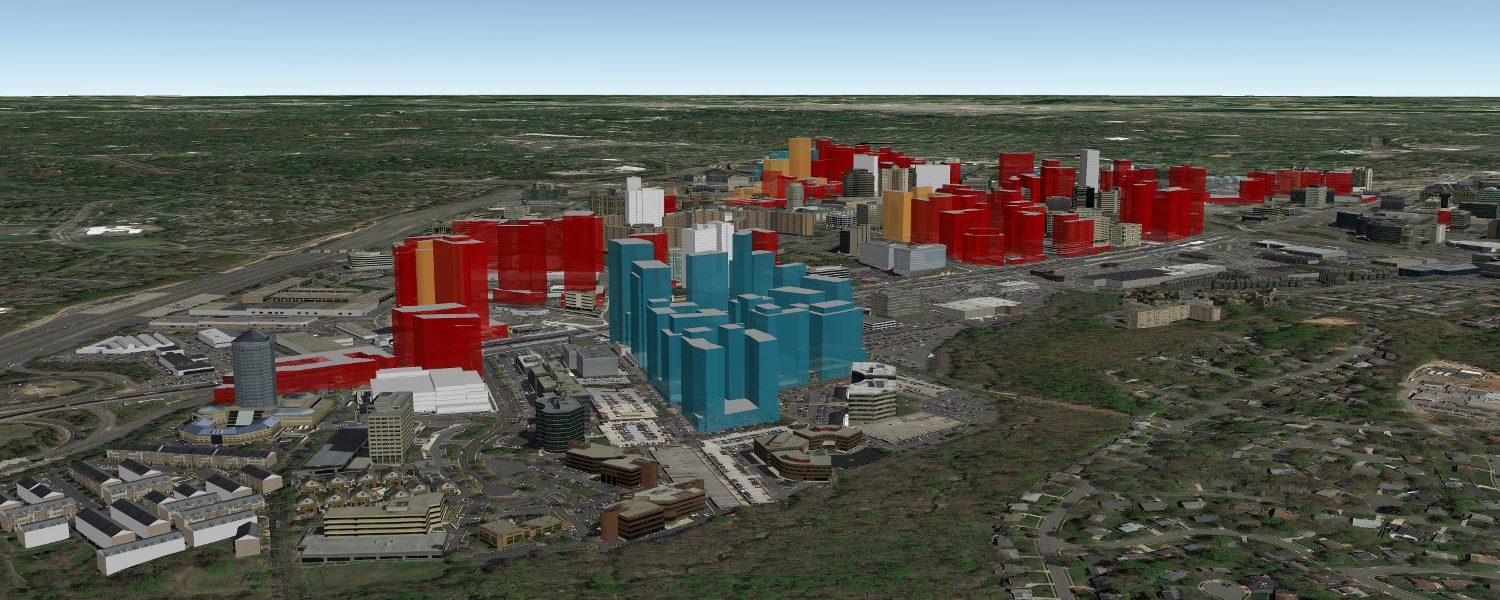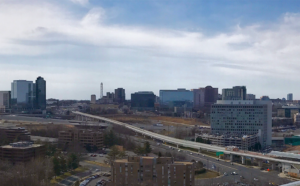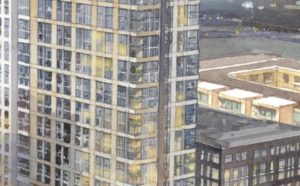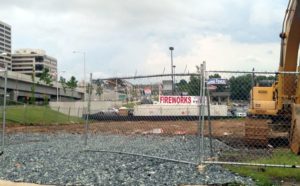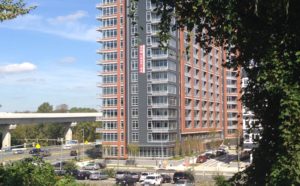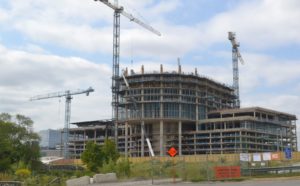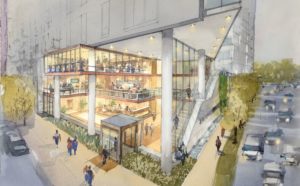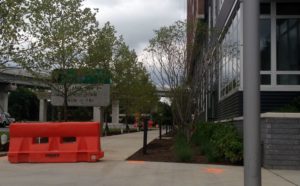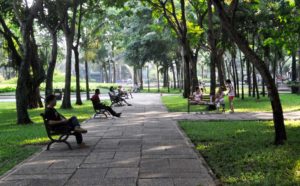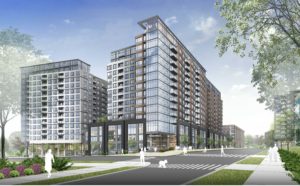When we hear about a particular redevelopment, and how tall or how many square feet of space it might end up being, it can often become devoid of context. For most people whether a building is 12 stories or 25 stories is not automatically differentiated — other than by counting rows of windows.
Much of the development in Tysons for the past twenty years has been of the 12-story variety, a height that is pretty common in our region for most dense office locations. Much of Tysons still has areas of very low rise buildings. There are strip malls, dealerships, parking garages, and older offices that will all eventually face the natural redevelopment cycle that every burgeoning urban area undertakes. In Tysons West, the transformation has thus far been slower than nearby Tysons Corner metro station and Tysons East, but a few early projects have risen.

At first these early projects appear completely out of context. Massive towers surrounded by low intensity development, underused parking lots, and near abandoned offices. But when you start viewing these towers in the context of what the neighborhood is becoming it will make more sense.
This future context becomes more apparent when we take a look at Tysons as it will look in the future — at least to the extent that we can today. The current Tysons West image depicts projects currently under construction in yellow. Adaire for instance overshadows everything around it at over 300 feet tall. The future Tysons West image shows in red those buildings which are already approved for development by Fairfax County, and in blue those buildings currently under review by Fairfax County. This does not include the likely development which will occur in the neighboring properties along Route 7, as these have not yet submitted rezoning plans.

When viewed with these future buildings, towers like Adaire become less isolated and more incorporated into the urban fabric. What is happening in Tysons today is early pioneering projects getting in — word play warning — at the ground floor. Once these groupings of early buildings hit a critical mass, these towers will be less isolated and more connected and contextually appropriate.


